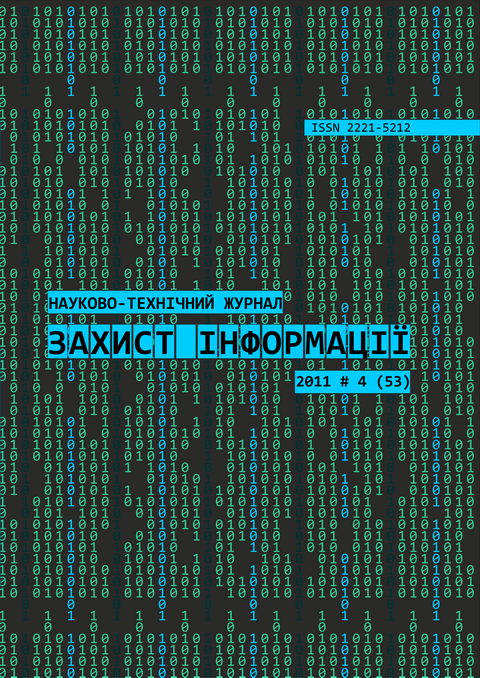РОЗПОДІЛ РЕСУРСІВ ІНФОРМАЦІЙНОЇ БЕЗПЕКИ В ДИНАМІЧНОМУ РЕЖИМІ
DOI:
https://doi.org/10.18372/2410-7840.13.2046Keywords:
цільова функція, теорія ігор, сідлова точка, динамічний розподіл ресурсів, метод БелманAbstract
Розглянуто динамічний режим протистояння двох сторін в сфері інформаційної безпеки. Приведено приклади розрахунків системи з двох об’єктів з різними вразливостями і різним розподілом інформації на об’єктах. Розглянуто перехідний процес при досягненні сідлової точки та визначено інтервали її існування.References
Tatsumi K. Optimal timing of information security investment: A real options approach / K. Tatsumi, G. Makoto // WEIS 2009, University College of London. – July 21, 2009.
Bohme R. The Iterated weakest link: A model of adaptive security investment / R. Bohme, T. Moor // WEIS 2009, University College of London. – June 24, 2009.
Левченко Є.Г. Оптимізаційні задачі менеджменту інформаційної безпеки / Є.Г. Левченко, А.О. Рабчун // НТЖ Сучасний захист інформації. – 2010. – №1. – С. 16-23.
Беллман Р. Динамическое программирование. – М.: ИЛ, 1960. – 400 с.
Downloads
Issue
Section
Articles
License
Authors who publish with this journal agree to the following terms:- Authors retain copyright and grant the journal right of first publication with the work simultaneously licensed under a Creative Commons Attribution License that allows others to share the work with an acknowledgement of the work's authorship and initial publication in this journal.
- Authors are able to enter into separate, additional contractual arrangements for the non-exclusive distribution of the journal's published version of the work (e.g., post it to an institutional repository or publish it in a book), with an acknowledgement of its initial publication in this journal.
- Authors are permitted and encouraged to post their work online (e.g., in institutional repositories or on their website) prior to and during the submission process, as it can lead to productive exchanges, as well as earlier and greater citation of published work (See The Effect of Open Access).

